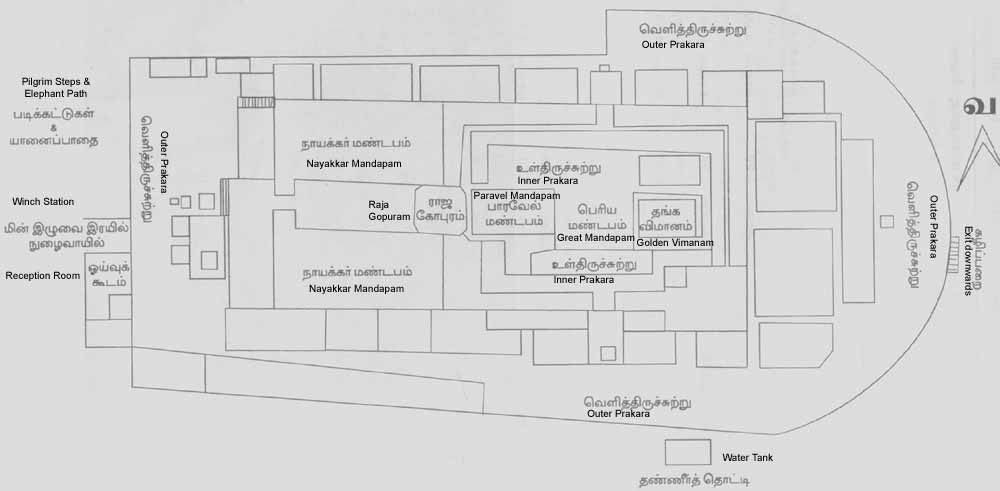
|
|||||||||
|
| |||||||||
Master Plan for Palani Hill TempleA Master Plan for the Hill Temple was first conceived by Mr. N. Mahalingam, a well-known industrialist, an acknowledged authority on transport and an engineer, when he was a member of the State Planning Commission. From an early age, he has been a regular pilgrim to Palani, his home town of Pollachi being within an hour's drive. The lack of architectural homogeneity in the Hill Temple was an eye-sore to him. He wanted to cut short the waiting time for devotees and to make such structural alterations as would enable devotees to come in a queue straight in front of the deity and see the image of Lord Dandāyudhapāni as they inch their way to the doors of the sanctum sanctorum. If these things were done and pictorial representations presented in marble of the legends relating to Muruga, Palani could develop as a cultural centre reflecting literature and agamas, in addition to being an emotional centre. So he visualized the idea of a master plan.
Seen in silhouette from a distance of ten miles in all its transcendental splendor is the 450 feet high hill and the temple atop it, the total floor space of three acres on the top of the hill was found inadequate and so Devasthānam has been implementing Mr. Mahalingam's master plan to expand the floor space. The plan envisages the widening of the outer prakaram on the eastern slope, construction of a large common dining hail for pilgrims and marriage parties, a new Mani Mandapam, Mahā Mandapam and Tirumathil Mandapam, a new 7-tier Rājagopuram in front of the existing one and small gopurams over the other three entrances in the inner prakaram, a guest house, an overhead tank, office building and parking shed for the golden car. The first phase of the plan — expansion of the eastern prakaram by 36 feet — has been completed. Seventy-six rest-rooms for gurukkals and pandarams and toilet facilities for pilgrims have been provided at slightly lower levels. The second phase consists of a 95 ft. rāja gopuram modeled on the rāja gopuram of the Gudiyatham Karpuleeswarar temple and an overhead tank; the latter has been completed. The Nayakkar Mandapam, a 172-pillared hall with a plinth area of 15,000 sq. ft. will be fully re-done to permit more light and air. The Sobhana Mandapam is to be re-built; the central portions have been widened to facilitate worship of the Lord without obstructions. Apart from the addition of floor space, the topography of the Hill Temple has changed considerably, in recent years, by the addition of two beautiful structures behind the sanctum sanctorum, i.e. on the Eastern Prakaram and facing the hills. The Karttikai Mandapam depicts in stucco work beautiful representations of all the six traditional shrines of Lord Subramanya and of Shanmugar and Vinayakar. The Murugan legend as associated with the Sthala Purānams of His most sacred shrines (Aaru Padai Veedukal) has been pictured in stucco work by traditional craftsmen of the highest calibre in a way that will charm artists and connoisseurs. This structure is available for holding religious discourses, music concerts and marriages. Adjoining it is the Vasanta Mandapam which too is a feast for the eye. Stucco-works of nine well-known goddesses are depicted here in an artistic manner. The deities are:
|
